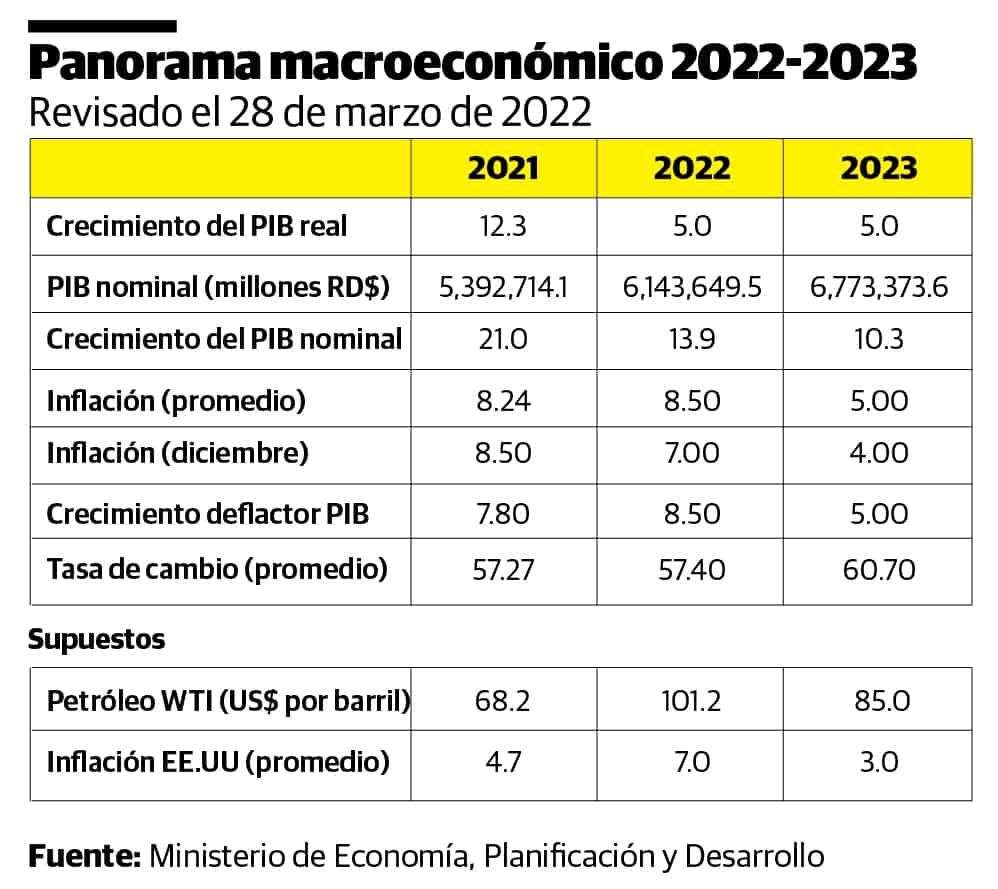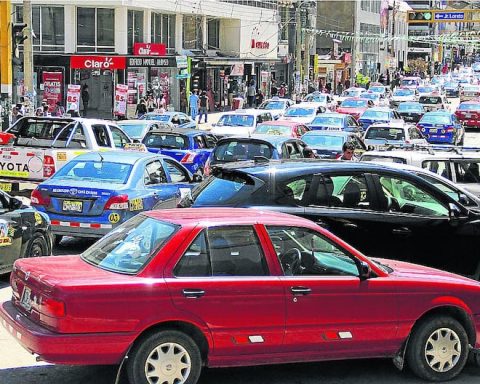The official economic forecasts not only downgrade the growth of the Dominican economy for this 2022, but also estimate a inflation average slightly higher than last year.
In documents released separately, both the central bank as the Ministry of Economy, Planning and Development project that the gross domestic product (GDP) of the Dominican Republic will grow 5% this year, when in January the financial institution had projected a growth of the economy around 5.5 -6.0%, different from the 12.3% exhibited by the authorities in 2021, in relation to the end of the previous year.
While the inflation average is estimated for 2022 at 8.50%, slightly higher than the 8.24% of 2021, although it is projected lower for the coming December, with 7%, contrary to the inflation of 8.50% with which it closed the same month of the previous year.
“It cannot be the same”, indicates the economist and coordinator of the Economics and Financial Engineering careers of the Technological Institute of Santo Domingo (Intec), Rafael Espinal, referring to the drop in the projection of economic growth. “Because the international environment is complicated by Russia’s military intervention in Ukraine and its effects on the world economy.”
“In addition – he adds – the consequences of the economic crisis generated by the pandemic are still present, which is expressed in the costs of maritime transport, the disruption of global value chains and the high prices of food and fuel.”

The downward revision has not only occurred in the Dominican Republic. The Bank of Spain, in its latest quarterly report released yesterday, lowered its growth forecast for that country for 2022 to 4.5%, almost one point below the 5.4% projection made at the end of last year, due to the outbreak of the war in Ukraine.
The UN Conference on Trade and Development also lowered its forecasts for global growth in 2022 by 1%, placing them at 2.6%.
When Professor Espinal is asked what the consumer can do in the face of the macroeconomic outlook, given that their salaries remain the same, he replies: “Reduce non-essential consumption; those who have savings, try to take advantage of the high market rates in pesos; not get into debt and try to save on transportation, energy and imported food”.
At its monetary policy meeting in recent March, the central bank decided to increase its reference interest rate by 50 basis points, from 5.00% to 5.50% per year, accumulating a variation of 250 basis points since November 2021.
“The Dominican economy also has to adjust interest rates to avoid capital flight in the face of rate hikes made by the FED (Federal Reserve) in the United States and carry out other economies in the region”, says the Espinal Economist.
“These interest rates -he continues- discourage investment and consumption and consequently generate lag effects on GDP growth. Likewise, tourism, foreign investment and even remittances will slow down the pace reached in 2021, if the adverse outlook continues in the rest of the world.”
In fact, the central bank It already reports a reduction in the amount of remittances received between January-February of this year, of 45.7 million dollars, when comparing the same months of 2021. In the same months of last year, 1,553.8 million dollars were received and in the current ones 1,508.1 millions of dollars.
“Both the delicate geopolitical scenario that the world is experiencing, as well as the continuous threat of the appearance of new variants of COVID-19, generate very high levels of uncertainty that have caused downward revisions in global growth and an increase in international prices” , says the Ministry of Economy in a report on the macroeconomic outlook 2022-2026 published recently.

















